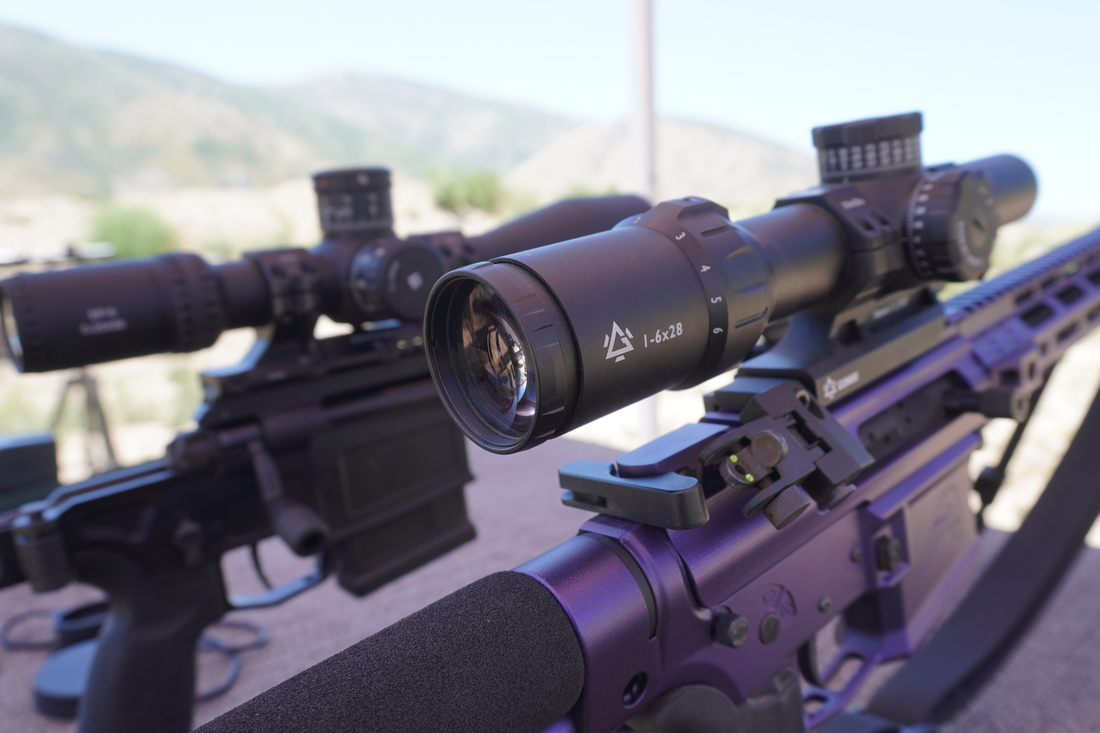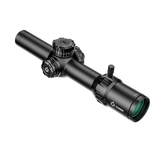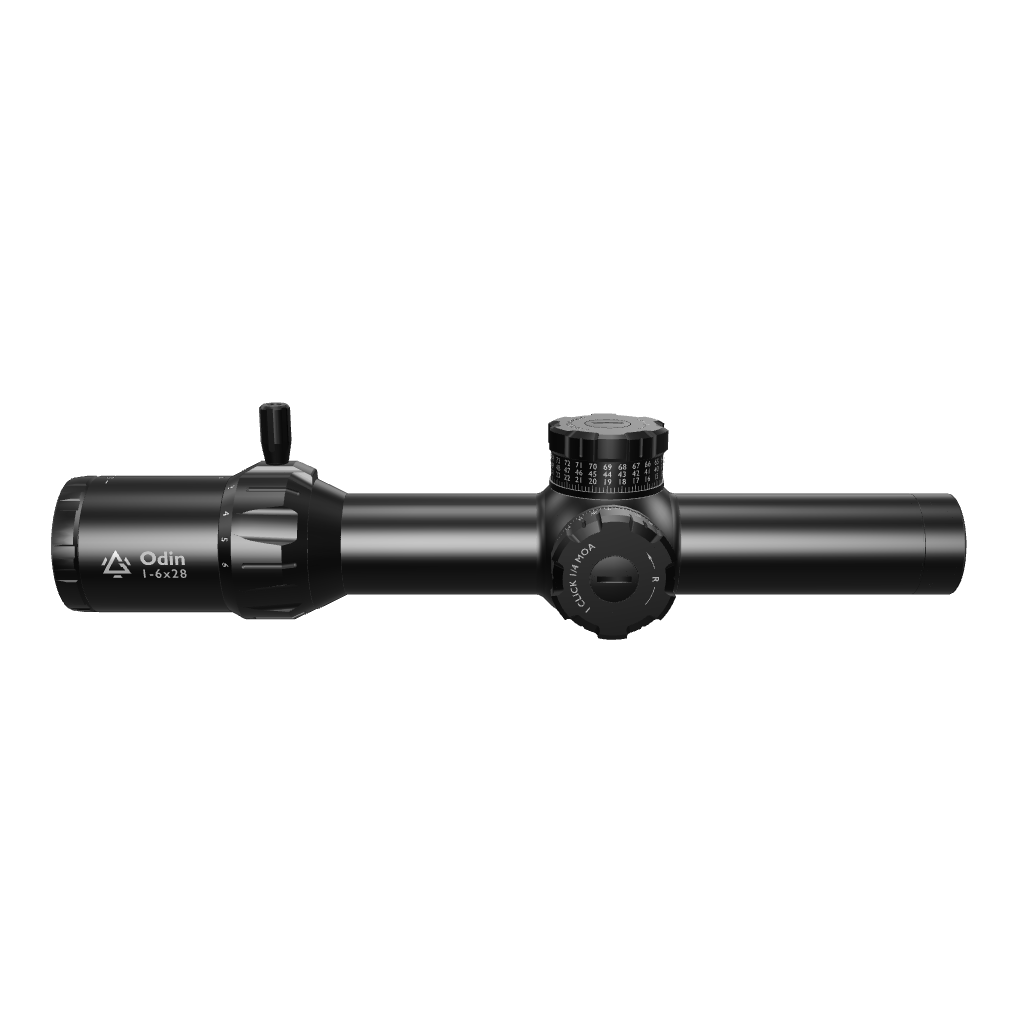LPVO vs Holographic Sights for AR
There’s nothing like a modern AR rifle. Whether your focus is on close-quarters defense, range shooting, or mid-distance precision, it goes with a lot of optics. There are many brands that cater to that option.
However, some shooters may face a challenge between choosing LPVOs and holographic sights. Both are excellent in their own right, but they serve different needs. Understanding the difference between an LPVO vs. holographic sight can help you choose what fits your rifle and your shooting style.
Advantages and Disadvantages of Using LPVOs on AR Rifles
Low Power Variable Optics (LPVOs) are designed for flexibility, and it’s something that AR-15 rifles excel at. Most AR1-5 LPVOs typically range from 1x up to 6x, 8x, or even 10x magnification, which allows shooters to transition from close to mid-range targets with a simple twist of the dial.
Here are the standard pros and cons of using an LPVO on an AR-15 platform:
Advantages of LPVOs for AR
- Versatility: LPVOs excel in both close-range and mid-range shooting, which means you can keep it on 1x for fast target acquisition or zoom in for distant precision.
- Reticle options: Many LPVOs have illuminated reticles for better visibility in low light.
- All-in-one solution: You don’t need to switch optics or pair with a magnifier because it does multiple roles efficiently.
- Durability: Quality LPVOs are built to handle recoil and harsh conditions.
Disadvantages:
- Weight: LPVOs tend to be heavier than red dots or holographic sights.
- Eye relief: They require consistent eye positioning to maintain a clear sight picture.
- Speed: LPVOs can’t match the rapid target transitions of a holographic sight at close range.
When to Choose an LPVO for an AR Rifle
An LPVO makes sense for shooters who are looking to cover multiple distances without relying on added attachments that weigh the rifle down.
Choose an LPVO when you want one optic to handle everything:
- Mixed-distance shooting environments
- Target practice beyond 100 yards
- Precision shooting at varied ranges
- Competitions where accuracy and speed are required
An LPVO like the 1-8x or 1-10x gives you flexibility, and they’re a common choice for most AR-15 LPVO enthusiasts. Many hunters and recreational shooters prefer LPVOs because they provide scope-level accuracy without the hassle.
Modern LPVOs are built to endure, with clear glass and durable adjustment turrets, making them a reliable all-purpose optic for any AR setup, the only exception being when AR-10 platforms are in question.
Advantages and Disadvantages of Using Holographic Sights on AR Rifles
Holographic sights project a reticle within a glass window, allowing you to aim quickly with both eyes open.
Most brands design them in a way that they balance tactical and defensive shooting. Here’s what to watch out for:
Advantages:
- Speed: Almost instantaneous target acquisition. The reticle appears on the target plane, so you can focus naturally with both eyes open.
- Simplicity: No magnification adjustment or focus shift. What you see is what you shoot.
- Low-light readiness: The illuminated reticle works excellently in low-visibility settings.
- Eye relief: You can mount it anywhere on the rail and still see the reticle clearly.
Disadvantages:
- Limited range: Without a magnifier, holographic sights are ideal only up to about 100–150 yards.
- Battery dependence: They rely entirely on electronics, and sometimes the batteries can be a hassle during long treks.
- Additional cost: Adding a magnifier improves range but increases both weight and expense.
Keep in mind, holographic sights are a strong choice for fast, close-range engagement but lose efficiency for longer shots. Then you have the arguments for red dot sight, fixed power, and how they fare against LPVOs, which brings even more complex variations to consider.
When to Choose Holographic Sights for an AR Rifle
Go with a holographic sight when speed is the top priority. This option works best for:
- Home defense or tactical setups
- Urban environments with close targets
- Shooters who prioritize fast target engagement
- Lightweight rifle builds
If you add a magnifier behind your holographic sight, you can extend its range, but this setup increases bulk.
So, the only way to put an end to the LPVO vs holographic optics rifle discussion is to just consider weight balance and range application.
Factors To Consider When Choosing Between LPVOs vs. Holographic Sights for AR Rifles
Deciding between an LPVO vs. holographic sight depends on your rifle’s purpose and your typical shooting environment.
There isn’t a one-size-fits-all answer, but there are clear points that can help you guide what to look for:
- Engagement Range: If your targets are within 100 yards, a holographic sight gives you fast target transitions and wide situational awareness. For 200+ yard or mixed-distance scenarios, an LPVO gives you more flexibility.
- Shooting Style: For fast, reactive shooting like home defense or CQB scenarios, a holographic sight is great. But if you spend time at the range shooting steel or competing in 3-Gun events, an LPVO magnification range makes it more practical.
- Weight and Setup: Holographic sights are lighter and easier to mount, while LPVOs are heavier but consolidate multiple roles into one optic.
- Budget: Most LPVOs on the market are not exactly cost-efficient. Adding a magnifier to a holographic sight setup can bring the total cost close to that of a mid-range LPVO. For example, when comparing red dot sights vs. LPVOs, the cost value often favors red dot sights instead of LPVO when you’re looking for versatility.
- Battery Dependence: Holographic sights rely on power. LPVOs still function as regular glass scopes if their illumination fails.
- Training Preference: Some shooters prefer AR-15 platforms that don't need magnification at all. Others prefer AR-15 setups that offer a lot of freedom and adaptability, for those frequent magnification adjustments. Consider what feels comfortable for your the most.
Affordable LPVOs for Your AR Rifle
Gunnr’s Odin FFP LPVO lineup is an excellent place to start to resolve the LPVO vs holographic sight discussion. Available in multiple magnification options, the Odin series offers clear glass, first focal plane reticles, and rugged aluminum construction, all at a competitive price.
The Odin LPVOs are designed for shooters who need flexibility and durability without overspending. With crisp reticle illumination and smooth magnification control, the 1-6x28 type can transform your AR-15 platform into the setup of your liking.
You can explore Gunnr’s full range of Odin FFP LPVO scopes and find a model that fits your rifle and your shooting needs.
For long-range AR users, the Odin 1-8x24 FFP LPVO is also an excellent choice to consider if you’re looking for the best mix of speed and precision in a single optic.
Conclusion
Both LPVOs and holographic sights have their place on the AR platform. But it all just boils down to what you prefer, specifically when range is in question. For an all-around solution that balances speed, clarity, and accuracy, a Gunnr LPVO is your best bet.







